5 thrilling tales of forgotten Malaysian World War 2 heroes
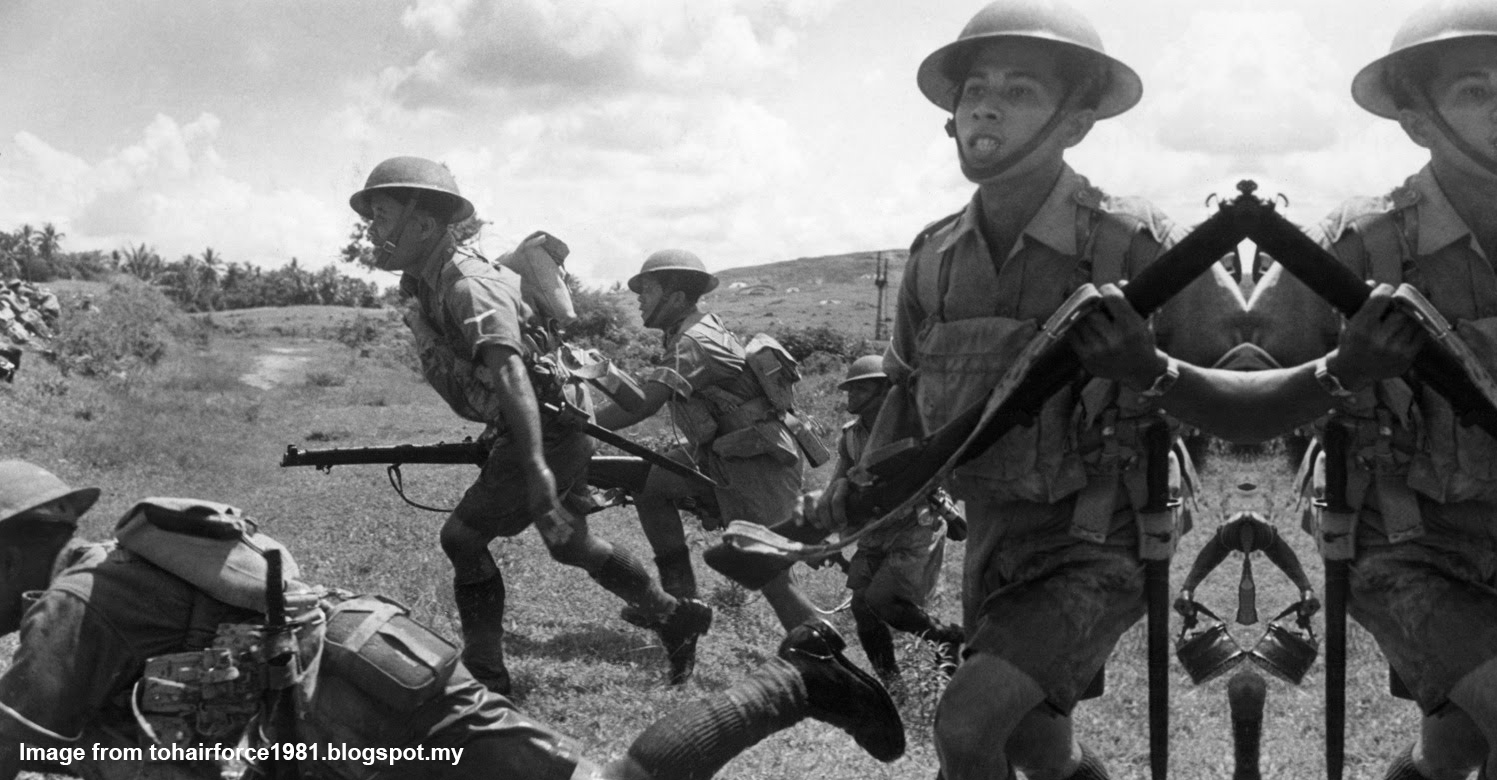
- 4.6KShares
- Facebook4.4K
- Twitter35
- LinkedIn6
- Email40
- WhatsApp103
*Artikel ni ada dalam Bahasa Melayu, tekan sini untuk baca!
In modern literature and film, we are often presented with depictions of heroic figures from World War II, the most destructive conflict in history. You know, people like Vasily Zaytsev, the fearsome Russian sniper-bada$$ who racked up a staggering 225 kills on the Eastern European Front. Or Franz Stigler, the Nazi pilot who famously risked execution to spare and save a crippled American bomber plane in an amazing act of chivalry. These were regular soldiers who displayed an unnatural level of courage above and beyond the call of duty to earn themselves legendary bad@$$ status.

It is a shame then, that many of our own local heroes who took part in that same war have largely been forgotten. Of course, we’ve all heard of Leftenan Adnan and his famous exploits fighting the Japanese in the Battle of Singapore, but what about the lesser known men and women who also contributed to preserving the freedom and sovereignty of our nation?
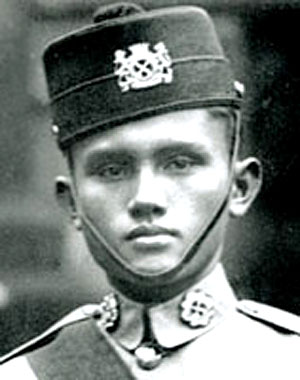
Today CILISOS pays tribute to these unsung heroes whose brave deeds definitely earned them a more prominent spot in our history. To these heroes, and the other gallant men and women who gave their lives to keep our shores safe, we salute you!
1. The Doctor Who Fought Japanese Guns With A PARANG

The crafty guerrilla tactics of the Imperial Japanese Army were an effective form of psychological warfare, helping them score lots of sneaky kills and sapping their enemies’ morale. However, after the Japanese invaded Malaya in late 1941, a young doctor from Kuching decided to give them a dose of their own medicine.
The son of a dentist, Albert Kwok Fen Nam studied traditional Chinese medicine in China before starting his own practice in Jesselton (today known as Kota Kinabalu) in 1941. Not long after he moved in, the Japanese Empire decided to do the same, because Borneo had resources and resources = $$$ (or ¥¥¥, in Japan’s case).
During this time, Kwok already had a grudge against Japan because they KO’ed the Chinese back in their homeland. This feeling of tak puas hati resulted in him forming the Kinabalu Guerrillas, a group of local guerrillas who, like him, wanted to give the Japanese a dental appointment with their parangs. This group consisted mostly of Chinese, Suluks, and Bajau, as well as other indigenous groups such as Dusuns and Sikhs, hence making up the first ever ‘1Malaysia Squad’.

In October 1943, Kwok heard that the Japanese planned to forcibly recruit some 2000 local youngsters to join their military service. Well, Kwok wasn’t having that. On the 10th of October, the 300-strong Kinabalu Guerrillas launched an uprising against the Japanese which came to be known as the “Jesselton Revolt”. Armed with parangs and spears (cos guns are for weaklings and n00bz!), Kwok took 100 Chinese with him and led the charge on land, while the Suluks and Bajau attacked from the sea like a scene from Pirates of the Caribbean.
Albert ‘Jack Sparrow’ Kwok and his motley crew of machete warriors wrecked havoc on the enemy, thrashing them at Tuaran and Menggatal as revenge on the Japanese cos they dared to menggatal in Sabah, while the Suluks targeted key warehouses. The total death count on the Japanese side was somewhere between 60-90. In fact, the Kinabalu Guerrillas were so scary that the Japanese actually had to call in reinforcements from Kuching. Against 300 guerrillas armed with caveman weapons. Three. Hundred.

Also, the Japanese forces didn’t get the memo about the no-guns rule, and the guerrillas were soon overpowered by the cheating better-equipped Japanese. As payback for the Jesselton Revolt, the Japanese systematically massacred thousands of indigenous Suluks, virtually wiping them out. Kwok was beheaded at the age of 23.
But hey, just think about it: 300 men armed with blades went against a technologically superior army and pissed them off to the point of them actually committing genocide against a whole race. If that doesn’t convince you of what a ballsy group these guys were, we don’t know what will.

2. The Nurse Who Had Her Jaw Broken For Starting A Secret Hospital
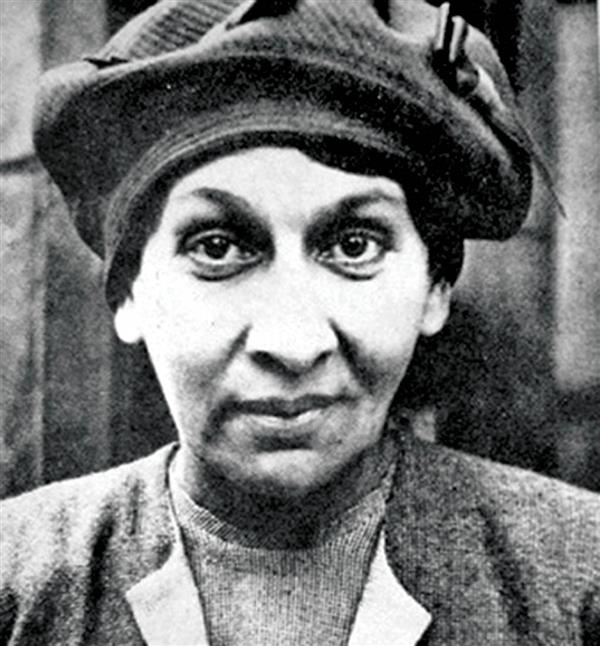
Not all warriors fight with guns and blades. Sybil Kathigasu, born Sybil Daly, was a nurse and midwife of Eurasian descent who was instrumental in the struggle against Japanese forces in Perak.
In December 1941, Sybil’s husband Dr. Abdon Clement Kathigasu heard the drone of aircraft outside his dispensary in Brewster Road, Ipoh, and, thinking they were RAF planes, stepped outside to take a look. Surprise, surprise; it turned out to be a Japanese attack, and he took a piece of shrapnel in his groin (ouch!). Probably not the best way to be introduced to your new colonial masters.

Sybil and her husband then evacuated to the nearby town of Papan. There, from their residence at No. 74, Main Street in Papan, they took up farming and started a “grow more food campaign”. They could have chosen to just stick to that and live out a long, boring life in peace, but of course, Sybil wasn’t that kind of woman.
A teeny bit upset that the Japanese were kacau-ing the peace, Sybil took it upon herself to play spy and listen in to overseas BBC broadcasts from her trusty radio to keep herself in the loop. However, during the Japanese occupation, you needed a license to own a radio, so to avoid being busted, she nicknamed her radio ‘Josephine’. She passed on any information she heard from Josephine The Pet Radio to the Malayan People’s Anti-Japanese Army (MPAJA), and her home became a secret hospital for anyone who wasn’t fond of the Japanese party-poopers.

However, she was eventually ratted out to the Kempeitai (Japanese secret police), and got thrown into Batu Gajah prison, where she was interrogated under extreme torture. This included:
- Regular beatings
- Burning by heated iron rods
- The “Tokyo wine treatment”, (violently force-fed water through a hose)
- Having all her fingernails pulled out
- Partial paralysis from blows to her spine
- Broken jaw from being kicked
The Japanese even dangled her 5 year-old daughter from a tree swarming with red ants, and threatened to burn her alive. But Sybil, being the female Terminator she was, STILL stayed silent and never divulged any information.
In fact, she somehow survived to see the surrender of the Japanese Empire in 1945, and would go on to testify in court against her former captors. That must have been one heck of a smug reunion for Super Sybil.
3. The Undercover Spy Who Was Arrested Because Of His Shiny New Watch
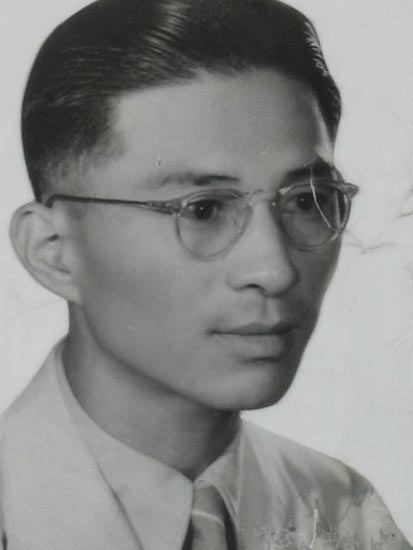
Japan only invaded Malaya in December 1941, but Lim Bo Seng, a China-born Hokkien businessman, had been a prickly, annoying, bespectacled thorn in their side even years before then.
Lim Bo Seng emigrated to Singapore from China in 1929 to take over his late father’s business. It wasn’t long before Japan decided to claim China under their Gundam-sized Empire, so Lim, being a patriotic supporter of the Chinese government, helped out by leading a boycott of Japanese-owned industries in Malaya. In fact, he actually convinced employees of a Japanese-owned tin mine to go on strike and follow him back to Singapore!

However, push came to shove when the Japanese entered Malaya, and Lim, being the cunning businessman he was, decided to put together a welcoming committee to give them an unpleasant stay. He helped to organise a 10,000-strong workforce of labourers tasked with sabotaging and generally just kacau-ing the Japanese.
Shortly before Singapore fell to the Japanese, Lim decided to kasi chance for a while, and escaped to India to take a breather. Here, he met up with the famous British spec-ops group Force 136, from whom he would pick up some cool James Bond spy skills, and become a key recruiter for ‘Operation Gustavus’. The mission: To bring down the Japanese from within by establishing a local spy network to aid the local resistance.
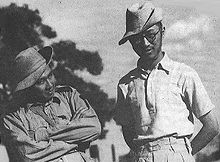
So Lim and some other agents would be snuck back into Malaya (in a submarine no less) and assume cover identities under legitimate businesses. Lim Bo Seng became ‘Tan Choon Lim’, a businessman and definitely-not-a-spy *wink wink*.
However, they kantoi-ed after the Kempeitai managed to capture and interrogate one of the agents. Lim was arrested at a Japanese roadblock because one of their soldiers was jealous of his fancy new watch, and he was sent to Batu Gajah prison. Despite being interrogated under torture, he refused to cooperate, instead choosing to give them the Jose Mourinho silent treatment:
“Since I’m in your hands now, I have nothing to say. I’m prepared to die.” – Lim Bo Seng
In captivity, he would protest against the ill-treatment of his fellow inmates, asking that his portion of sweet potatoes be given to them instead. Lim soon contracted dysentery (do not Google that if you have a weak stomach) and died in prison, ensuring that his secrets would die with him. Lim Bo Seng 1, Japanese Empire 0.
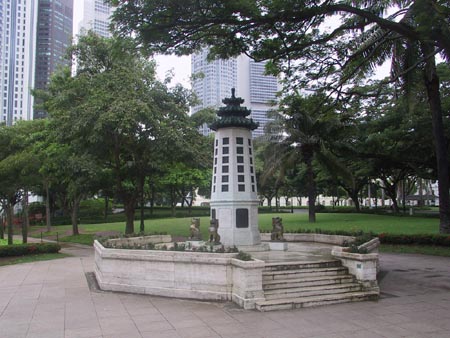
4. The Champion Boxer Who Made Our Former Prime Minister A Spy

There are people who can fight, there are people who can think, and there are people who have charisma. Then you’ve got Yeop Mahidin, a guy who had all of the above.
Not only was he a state bantamweight boxing champion; he was a highly educated civil servant who served as a magistrate in Teluk Anson and Kajang, and was appointed Assistant Direct Officer in Kuala Lipis.
However, he had initially aspired to join the now-legendary Royal Malay Regiment, before his headmaster advised him to take up Civil Service. Yes, this impressive résumé was only possible because his headmaster somehow convinced him that a career in Civil Service was cooler than shooting guns.
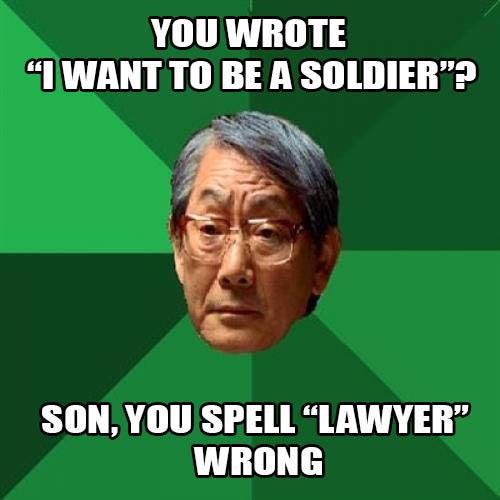
When WWII broke out in Malaya, Yeop jumped at the chance to work his itchy trigger finger. With the consent of the Sultan of Pahang, he set up the Pahang Wataniah, a guerrilla strike-force trained by Force 136.
While the Pahang Wataniah Guerrillas initially started out with very few members, Yeop went on a recruiting spree throughout 1944 by telling everyone about the naughty things the Japanese had done in the country. Soon, he would meet an young man eager to serve and, recognising this young man’s talents, made him a double agent to spy on the Japanese. The name of this young man? Abdul Razak, the man who would become our second Prime Minister! That’s right; Jibby’s dad used to be Yeop Mahidin’s Padawan learner. Cool huh?
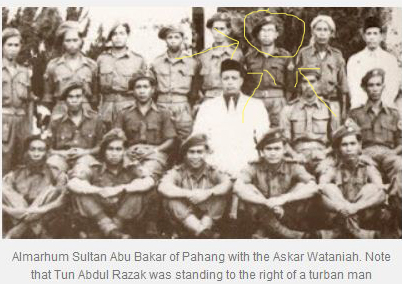

In one of their more well-known missions, 26 Wataniah members, commanded by Yeop himself, killed between 30 and 40 Japanese and destroyed 41 vehicles in a single ambush! Yeop’s reputation as a fierce fighter and a shrewd leader was such that he even earned himself a nickname: ‘Singa’ (‘The Lion’).
After the war, Yeop was tasked with whacking the Communists during the Malayan Emergency. He was appointed Assistant Director of the newly-created ‘Home Guard’, which was replaced by a new entity after the Emergency ended. This new group came to be known as the Askar Wataniah (Territorial Army Regiment), the reserve branch of our Army, and Yeop became its first Director.
Yeop Mahidin passed away in 1991 of old age, but his spirit lives on through the Askar Wataniah.
5. The Tiny RAF Pilot Who Gave German Prison Guards The Slip
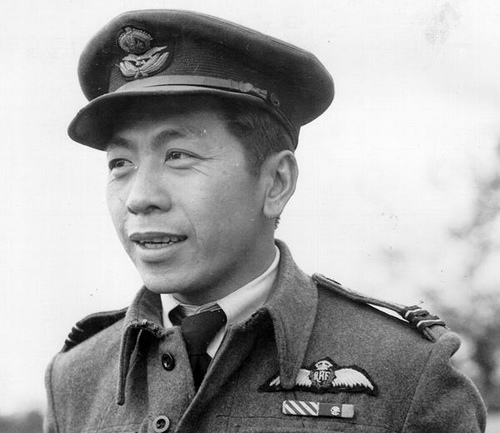
Wing Commander Tan Kay Hai has a story that is just too cool not to tell: you see, this guy actually flew with the British RAF against the Nazi Luftwaffe in Germany!

Born into a wealthy family, Tan was educated at an English-medium school, where he fell in love with the good ol’ values of the British Empire. Tan, like Anakin Skywalker, was passionate about machines and flying from a young age, and in his youth he would alternate between fixing cars and practicing his flying skills in an RAF biplane.
When Hitler pwned France in 1940, Tan, being the Anglophile that he was, considered signing up for the RAF to fight the Nazis in His Majesty’s name. However, there was a little problem: Tan was rather short for a pilot, standing at only 5 feet and 6 inches. On top of that, he was quite old for a pilot recruit (26) and was married with a son (the RAF traditionally preferred to recruit singles).

But in October 1941, the RAF’s pilots were getting chewed up like sauerkraut by the Luftwaffe, and they were in desperate need of pilots. Seizing his chance, Tan lied to his family, telling them he was joining a commercial airline, and he enlisted.
Despite being recruited as a service pilot (basically the air equivalent of a parking jockey), he impressed his superiors with his imba skills, and was soon flying reconnaissance missions over North Africa and Italy. His daredevil tactics and happy-go-lucky attitude earned him the nickname “Charlie Chan”, and his squadron mate had this to say about him:
“He was an inspiration to us all – cheerful-brave and amusing. He loved to count the antiaircraft (flak) bursts and figure the cost to the Germans. He often said if they didn’t hit him he would bankrupt them!!” – Parke F. Smith, 225 Squadron
After blazing the trail and taking names in North Africa and Italy, Tan was posted to the Big One: the Normandy Invasion (D-Day). However, his luck would run out here. During a reconnaissance mission near Paris, Tan was shot down by German fighters and taken prisoner. Game over? Not for this pilot! While the Germans were scrambling to relocate prisoners due to the approaching Russian army, Tan apparently slipped away and headed for freedom. In fact, he was back flying in England only a few months later!
After the war, Tan would go on to command the Singapore Wing of the Malayan Auxillary Air Force, and cement his place as a legit hard-core hotshot.
Lest We Forget
Back then, it didn’t matter what race you were, or what little training you had, everyone was in it together out of the love of the country. And the most incredible part is that back then, we weren’t even a proper country!
These stories just show that you don’t have to choose who you want to work together with based on labels of race, religion or ideology; nor do you have to pull out a gun to prove your loyalty to the nation. You can make a difference regardless of your background, as long as you have the desire to do the right thing.
Most importantly, we should allow these forgotten heroes the tribute they deserve, lest we forget.
Co-written with Mahadhir Monihuldin.
- 4.6KShares
- Facebook4.4K
- Twitter35
- LinkedIn6
- Email40
- WhatsApp103



